While many people are unaware it exists, the Veterans Administration (VA) Aid & Attendance Special Pension provides monetary assistance to wartime veterans – and surviving spouses of deceased veterans – who need regular personal assistance. Qualifying aid or assistance can be provided at home, in an assisted living facility, or in a nursing home, and can be provided by friends, family members, or healthcare professionals.
For 2013, the Aid & Attendance pension can provide up to $1,732 per month to an unmarried veteran, $1,113 per month to a surviving spouse, or $2,054 per month for a veteran who is married.
Best of all, if the veteran qualifies, Aid & Attendance funds are provided in addition to monthly pension and Social Security benefits.
If you or someone you love is a veteran and needs help with daily activities like cooking, cleaning, dressing, driving, mobility, or other assistance, the Aid & Attendance benefit can provide funds you need to pay for that help. Many elderly veterans and surviving spouses whose incomes are above the congressionally-mandated legal limit for a VA pension may still be eligible for monthly Aid & Attendance benefits if they have high expenses for care, including nursing home expenses, that are not reimbursed by insurance or other sources.
Aid & Attendance benefits can make a real difference but, filing a claim can be complex and time-consuming. Like most entitlements, veterans benefits are not awarded automatically – to receive them, you have to apply.
Qualifying for Benefits
Who is eligible for Aid & Attendance? First let‘s look at the basics. For a qualifying wartime veteran or surviving spouse to qualify for this special monthly pension, the veteran must have:
Once those criteria are met, a veteran could qualify for standard Aid & Attendance benefits or for Housebound benefits. (Veterans cannot receive both Aid & Attendance and Housebound benefits at the same time.) According to VA standards, veterans may be eligible for Aid & Attendance benefits if their medical needs fall in any of the following categories:
Veterans who do not qualify for Aid & Attendance may still qualify for Housebound benefits when:
Sound Complicated?
Determinations of a need are based on medical reports and findings by physicians or from hospitals or nursing homes. If the veteran is a patient in a nursing home or is blind or nearly blind, qualifying for benefits is almost automatic. In other cases, all of the disabling conditions in the list above are not required. The evidence simply must establish the veteran or spouse needs regular, scheduled, and ongoing, aid and attendance from someone else. Care on a 24-hour basis is not a requirement.
But those are simply rough guidelines. The application process, the quality of your documentation, and ultimately the VA will determine whether you or a loved one qualifies for benefits.
Applying for Benefits
Gathering and preparing the right documents is critical. Once you gather the right documentation, the next step is to complete and submit the appropriate application form.
The process can take six to nine months (or longer), so make sure you do your best to avoid any additional delays along the way. The VA is working on speeding up the process through a paperless application process, but your application must be fully documented and complete to gain expedited approval through this process.
Keep in mind, while applying and qualifying does take time, benefit payments are retroactive to the date the VA received the application. During this time the applicant must be actually incurring the costs of care. So time is of the essence and an incorrect application will create a nightmare of expense and uncertainty.
Important Note: If you are applying on behalf of a parent who is incapacitated, you will need to complete additional paperwork. Without this paperwork you will not be allowed to deal with the VA on behalf of your parent. If you wish to receive benefits on their behalf as a fiduciary, you will have to be interviewed and approved by the VA. The VA does not recognize Powers of Attorney they have not approved.
Calculating Benefits
The Aid & Attendance monthly pension benefit amounts are based on a simple formula:
Total income minus cost of unreimbursed care costs
The formula is simple, but determining your actual benefit amount can be complicated.
It is not easy to calculate the actual benefit unless you are an expert. It is highly recommended that you work with a qualified benefits consultant.
In general terms, the VA will evaluate the applicant’s assets and income against the total cost of care. (That’s why documenting all care expenses is so critical.) If the veteran has significant assets or a monthly income over the program limits, they may not qualify for Aid & Assistance. Roughly speaking, if an individual or couple has assets – not including their home, one automobile, and personal property – over $40,000 - $50,000 (maximum $80,000, but this amount is rarely granted), qualifying may be difficult. However, it is no longer possible to assure a Vet that he/she can qualify for benefits if his assets are below a certain amount. The asset threshold depends upon the age and life expectancy of the applicant (and spouse) and the ratio of health-related expenses to income and is to some degree discretionary with the VA caseworker. But an experienced benefits consultant can help to make a highly educated guess about how much the Vet can have.
With proper planning in advance, making qualifying gifts and setting up appropriate trusts can effectively reduce a veteran’s asset worth. Just keep in mind that giving away assets can affect eligibility for Medicaid benefits. Our office can help coordinate estate planning, VA considerations, and Medicaid considerations to limit risk and maximize benefits.
Conclusion
If you or your loved one meets the requirements, the Aid & Assistance Pension Benefit could provide thousands of dollars each year to meet medical expenses and provide necessary care.
But the application process is complicated and time-consuming. For some people, reallocating assets and shifting income may be necessary – and those reallocations could have a significant impact on Medicaid eligibility, whether now or in the future.
Schedule an appointment with our office to get professional, experienced assistance. Our office can help you gather the required documentation and complete the required paperwork. We can help coordinate the Aid & Assistance application, guide you through potential Medicaid issues, and create or modify your existing estate plan to ensure a veteran receives all the benefits he or she has earned by service to our country.




